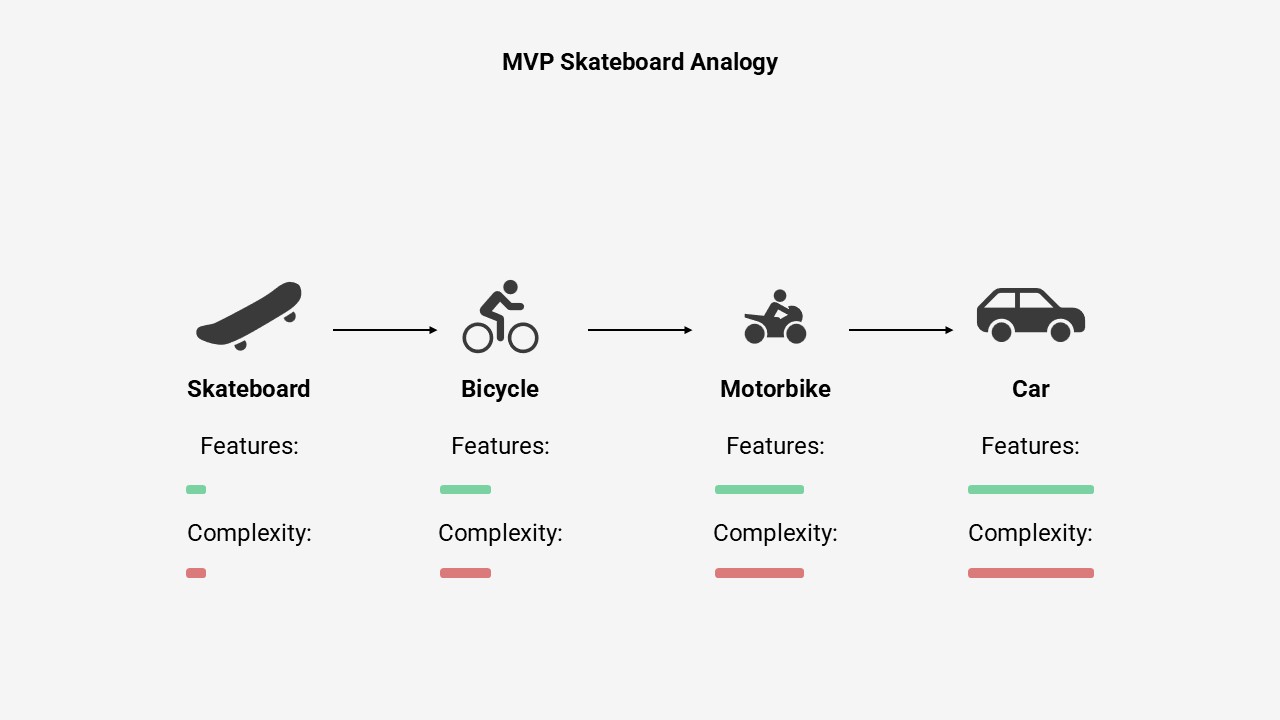How do you develop an MVP? How long does it take, and how much will it cost? All of those questions will be answered in today’s blog, but firstly, why should you develop an MVP? A minimum viable product, or MVP, is an early version of your software product that has just enough features to satisfy early users. The MVP has been the crucial beginning stage for many of today’s coolest and most successful companies such as Spotify, old-school Twitter, and Amazon.
Now, understanding these companies today may seem quite overwhelming. However, today’s blog will be much simpler than that since we will only focus on the beginning stage of their life – the MVP stage, so we can understand why it is so important to get right.
If you’d rather watch a video, we have made the following:
Why Develop an MVP?
Now, first of all, why is an MVP the beginning step favored by so many successful startups? Well, because it is a low-risk, agile, and customer-centric solution. To explain that a bit further, a common analogy is that an MVP is like a skateboard. While not being perfect, it does solve a very clear problem, to get from point A to point B. A more optimal product to solve that problem would of course be a car. But just imagine the massive investment cost and time that it takes to create such a complex product! A skateboard is a lot simpler. It takes less time to develop and still enables you to gather customer feedback to quickly change the product according to the customer’s needs.

Improving the MVP
The MVP skateboard of course comes with some drawbacks. You will then have to change the product according to the customer’s wishes. For example, they may want to travel further in a bit more comfort. Then, you could develop a bicycle! After adjusting some more, that skateboard turns into a car. With each step in the way, the product becomes a bit more advanced in terms of features. It is also able to address the problem in more optimal ways. Sadly, it also becomes a lot more complex to develop.
Instead of trying to develop a car on day 1, focusing on the simplest way to solve the point A to point B problem would save you a lot of time and money. For that particular problem, the simplest product would be a skateboard. However, knowing exactly what basic features you need to develop for your MVP is not easy. It requires you to really understand the problem that your software application has to solve, and we have already made a blog post on that topic, which you can find here.
How to Develop an MVP
Now let’s focus on how to develop such an MVP in practice. Using the problem statement that we mentioned in the previous post, you should be able to create a hypothesis of what the basic features that customers really want look like. The purpose of an MVP is to validate that hypothesis in the quickest, cheapest, and simplest way.
Depending on your unique situation, you can choose different ways to implement the necessary software features. You could choose a low or no-code option, such as Bubble or Webflow, but you might also just have to code the features yourself from scratch.
Time and Money Costs of Developing an MVP
The cost of developing an MVP can vary significantly. You can expect it to cost a minimum of a few hundred dollars per month. Because many of the services you need are paid on a monthly basis, it is in your best interest to develop the MVP rather quickly. It can usually take from a few weeks to a few months to develop. Once again, focusing on the core functionality of the product really matters, both from a time and money perspective.
When the MVP is finished and you have the basic features working, you need to distribute the MVP to a selected few people and gather their feedback. This is a crucial step because it will determine how you need to alter and improve the product according to their wishes.
Then, it is all about going from a skateboard to a car, or from an MVP to Amazon, as I started off this post by saying. Distributing the MVP and getting customer feedback will be the focus of our next post.
Protecting and Licensing an MVP
Before that, you most likely need a way of protecting the MVP so that the users cannot copy the product and send it around to their friends uncontrollably. What you seek is a software licensing solution where you are able to lock your product and hand out license keys to selected users. Coding such a system yourself will take a lot of time, which kind of defeats the purpose of an MVP.
In those situations, Cryptolens is here to help. We are a Licensing as a Service (LaaS) provider that helps developers license and protect their MVP’s code. You can set up all of our advanced licensing features in an easy-to-use dashboard with implementation guides in your favorite programming language. But the best of all is that you can implement our software licensing solution for free, within minutes.
Thank you for reading, Stay Ambitious!